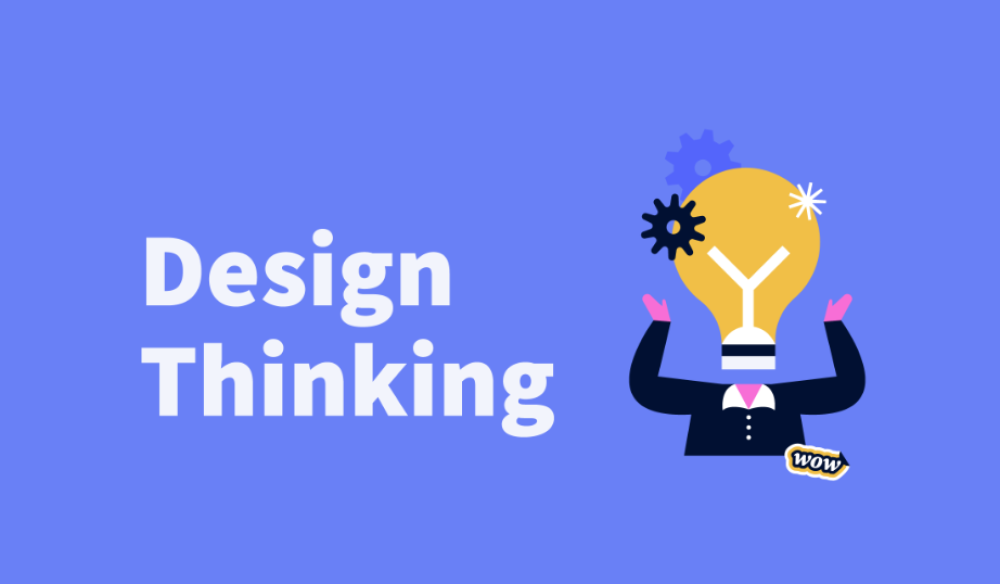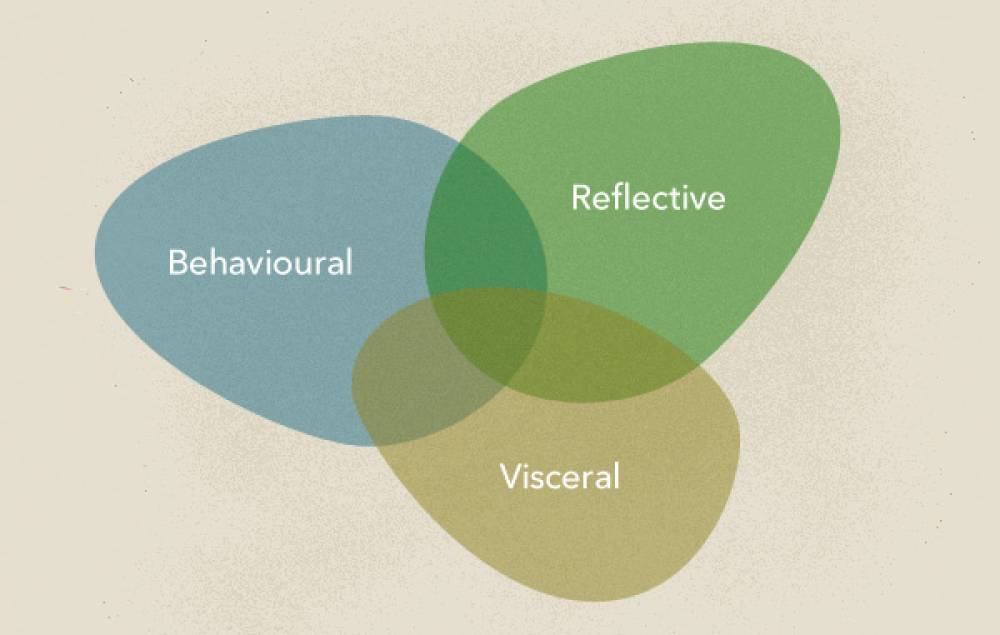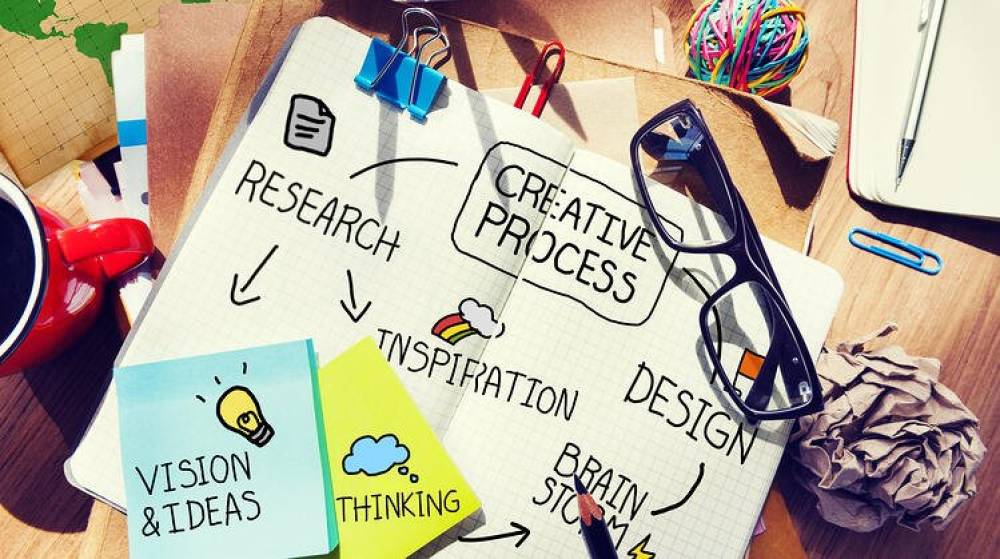

What Is Design Thinking ?

What Is Design Thinking?
There are actually multiple definitions of “design thinking”. Here is a definition from IdeoU:
“Design thinking has a human-centered core. It encourages organizations to focus on the people they’re creating for, which leads to better products, services, and internal processes. When you sit down to create a solution for a business need, the first question should always be what’s the human need behind it?”
“In employing design thinking, you’re pulling together what’s desirable from a human point of view with what is technologically feasible and economically viable. It also allows those who aren’t trained as designers to use creative tools to address a vast range of challenges. The process starts with taking action and understanding the right questions. It’s about embracing simple mindset shifts and tackling problems from a new direction.”
What is Design Thinking?
In simple terms, you might say that it is a human-engineering focus on product development that emphasizes considering human factors in the design. In this context, it is just a way of thinking like Agile and not a specific methodology.
Stages in Design Thinking
Another context of Design Thinking is to define a more specific set of process stages for how it is done. Here is an example of this from the Interactive Design Foundation:

https://www.interaction-design.org/literature/article/5-stages-in-the-design-thinking-process
Here’s an explanation of these stages. It’s important to recognize that these stages are intended to be conceptual. The design process is not necessarily intended to follow these stages rigidly and sequentially.
https://www.interaction-design.org/literature/article/5-stages-in-the-design-thinking-process
1. Empathize Stage
- “The first stage of the Design Thinking process is to gain an empathetic understanding of the problem you are trying to solve
- Empathy is crucial to a human-centered design process such as Design Thinking
- Empathy allows design thinkers to set aside their own assumptions about the world in order to gain insight into users and their needs”
2. Define Stage
- The next stage is to synthesize the information created during the empathize stage and develop a concise statement of the problem
- The problem should be defined from the perspective of the user need
- The Define stage will start to progress to the next stage, the Ideate stage. to look for potential solutions
3. Ideate Stage
- During the Ideation stage of the Design Thinking process, designers are ready to start generating ideas
- You’ve developed an understanding of your users and their needs in the Empathize stage, and
- You’ve synthesized your observations in the Define stage, and created a human-centered problem statement
- With this solid background, can start to identify new solutions to the problem statement you’ve created, and start to look for alternative ways of viewing the problem
4. Prototype Stage
- During the Prototype stage, the design team will produce some inexpensive prototypes to further investigate the potential solutions
- The goal is to identify the best solution to the problem that satisfies the user need most effectively and most efficiently
5. Test Stage
- During the Test stage, the design team will test the solution and gain user feedback
- The results will often be used in an iterative process to either further define the problem or to better understand user needs
How Are Design Thinking and Agile Related to Each Other?
On the surface, it may look like Design Thinking and Agile may not be very compatible:
- If you tried to do Design Thinking literally, it might mean following a set of stages sequentially like Waterfall. However, that’s not really the intent
- As I’ve previously mentioned, the stages are meant to be conceptual. They are not necessarily meant to be followed exactly in sequence as it might look
So, how do you go about integrating Design Thinking and Agile?
- The most important aspect of design thinking is to be sensitive to the human aspect of design and
- Don’t just rush into a design from a technical development perspective
- Don’t create a technically-elegant design that may or may not be well-designed from a human engineering perspective.
However, it is not obvious how you would go about integrating that into an Agile/Scrum approach from a process perspective.
Similarity to Lean
The relationship of Design Thinking and Agile is very similar to the relationship of Lean and Agile. Taken to an extreme,
- Lean would tend to pull you in opposite directions from Agile
- Lean emphasizes reduction of waste while Agile emphasizes flexibility and adaptivity
Those two things are not entirely consistent with each other:
- Following a lean approach might tend towards developing well-defined, repeatable processes and standardizing those processes to maximize efficiency and eliminate waste
- Taken to an extreme, that might not be very consistent with Agile which emphasizes flexibilty and adaptivity
However, if you think of Lean from a conceptual perspective, it is not inconsistent with Agile.
- There are many ways that an Agile approach already incorporates a lot of Lean thinking such as reduction of unnecessary documentation and other overhead; and
- In general, there is nothing inconsistent about doing an Agile/Scrum process as efficiently as possible to reduce waste as long as it is done in the right overall context
Design Thinking and Agile
There is a similar relationship between Design Thinking and Agile:
- Design Thinking emphasizes a methodical approach to analyzing and implementing a design to maximize the effectiveness of the design from a human engineering perspective
- Agile emphasizes delivering value to the customer as quickly as possible and refining the design later if necessary
However, the overall Agile approach is not entirely inconsistent with Design Thinking:
- Agile is a flexible and adaptive approach to project management and development that emphasizes relying heavily on user feedback and inputs to optimize the value of the solution you develop
- While that aspect of an Agile approach is very consistent with Design Thinking, it doesn’t go as far as too emphasize the structured approach that design thinking advocates to understand the human needs behind project requirements
How do we reconcile this apparent conflict and incorporate Design Thinking into an Agile approach?
- The general approach behind Agile is to emphasize delivering “value” to the customer as quickly as possible
- “Value” is whatever the business sponsor and the users define it to be and there are different aspects of “value” that each may have different priorities
Human factors is an intangible thing that is difficult to put a value on and may be frequently overlooked. Considering human factors in the design definitely has some level of value but the priority of that aspect should be relative to other aspects of the design




